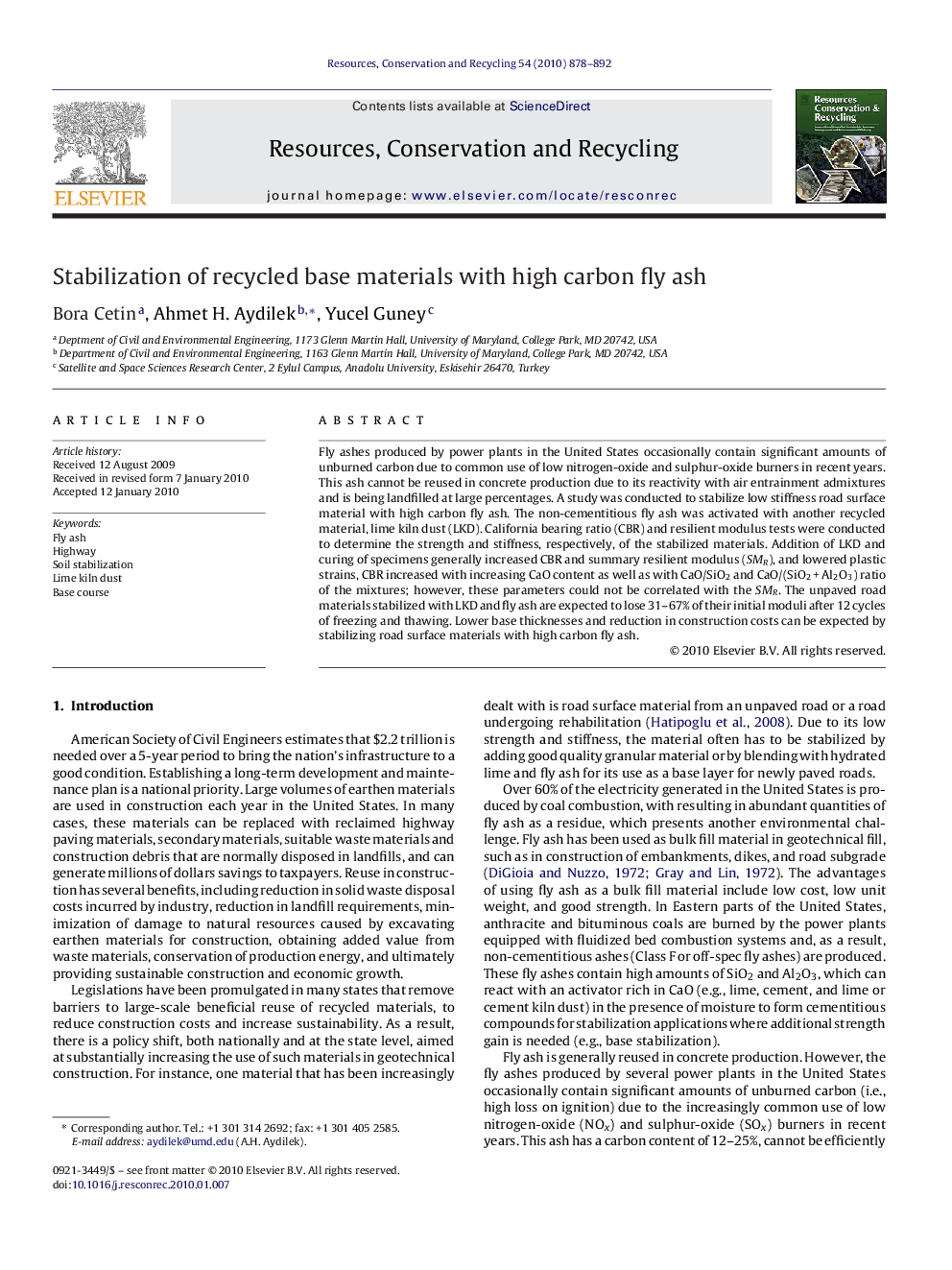| Article ID | Journal | Published Year | Pages | File Type |
|---|---|---|---|---|
| 1063938 | Resources, Conservation and Recycling | 2010 | 15 Pages |
Fly ashes produced by power plants in the United States occasionally contain significant amounts of unburned carbon due to common use of low nitrogen-oxide and sulphur-oxide burners in recent years. This ash cannot be reused in concrete production due to its reactivity with air entrainment admixtures and is being landfilled at large percentages. A study was conducted to stabilize low stiffness road surface material with high carbon fly ash. The non-cementitious fly ash was activated with another recycled material, lime kiln dust (LKD). California bearing ratio (CBR) and resilient modulus tests were conducted to determine the strength and stiffness, respectively, of the stabilized materials. Addition of LKD and curing of specimens generally increased CBR and summary resilient modulus (SMR), and lowered plastic strains, CBR increased with increasing CaO content as well as with CaO/SiO2 and CaO/(SiO2 + Al2O3) ratio of the mixtures; however, these parameters could not be correlated with the SMR. The unpaved road materials stabilized with LKD and fly ash are expected to lose 31–67% of their initial moduli after 12 cycles of freezing and thawing. Lower base thicknesses and reduction in construction costs can be expected by stabilizing road surface materials with high carbon fly ash.
